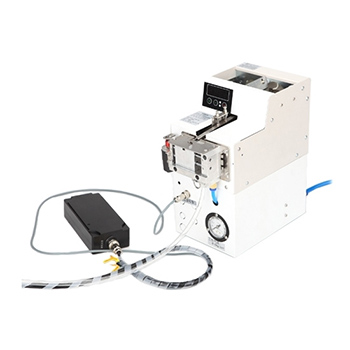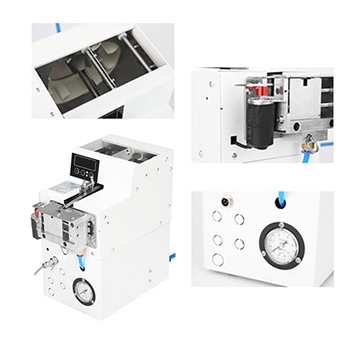What are Features of Screw Feeder?
The screw feeder plays an important role in production and life. Today, we will introduce its structural characteristics and main features of the screw feeder. We hope that after reading this article, you will have a better understanding of screw feeders.
The screw feeder checks the weight of the passing material through the weighing bridge to determine the weight of the material on the tape. The digital speed sensor installed at the rear continuously measures the running speed of the feeder. The pulse output of this speed sensor is proportional to the speed of the feeder.
The speed signal and the weight signal are sent to the feeder controller together. And the microprocessor in the controller processes, generates and displays cumulative/instantaneous flow. This flow is compared with the set flow. The frequency converter is controlled by the output signal of the control instrument to change the driving speed of the screw feeder, so that the material flow on the feeder changes, and it can approach and maintain the set feeding flow. In this way, the dosing requirements are achieved.
Structurial Features
After knowing the working principle of the screw feeder, let's introduce its structural characteristics.
The screw feeder is usually composed of a driving device, a head section, an intermediate section, a tail section, a head and tail bearing, and a feeding and discharging device. If conditions permit, it is best to place the drive device on the discharge end. As it is reasonable to install the drive device and the discharge port on the head section (installed with a thrust bearing), the screw can be in a tensioned state.
The head section, middle section, and tail section each of them has several different lengths. The arrangement order of each helical section of the screw conveyor preferably follows the order of the length of the helical section. Spiral sections of the same size should be lined up together.
When installing, start from the head and proceed sequentially. In the general arrangement of the screw feeder, attention should also be paid not to arrange the base and the outlet at the flange of the casing joint, and the inlet should not be arranged above the hanging bearing.
Here are the features of screw feeder.
- The connection between screw shaft and hanging bearing, head and tail shaft adopts embedded tongue type. Installation and disassembly do not require axial movement, and maintenance is convenient. Long mandrel, less hanging and less failure points are their advantages.
- The variable diameter structure is adopted to increase the volume of the hanging bearing to avoid the contact between the hanging bearing and the material. The life of the hanging bearing can exceed two years.
- Each transmission part adopts the floating connection method, and the hanging bearing is a universal joint structure, so that the spiral body, the hanging bearing and the tail assembly form an integral floating body. The screw feeder can rotate freely with the conveying resistance within a certain range, without jamming or blocking.
- The head and tail bearing seats are outside the shell. And all bearings adopt multi-layer sealing and matching sealing technology, so the bearing has a long service life.
- Compared with other conveying equipment, the screw feeder has the advantages of small cross-sectional size, good sealing performance, stable and reliable operation, multi-point loading and unloading in the middle, safe operation, and easy maintenance.
Main features
After knowing the structural characteristics of the screw feeder, let's take a look at its other characteristics.
- It is specially used for the measurement and control of powder materials.
- The feeding screw has a unique steady flow structure, and the feeding powder sinks evenly on the entire section of the feeding port, which is not easy to form arch and is not easy to punch.
- The steady flow spiral adopts variable pitch structure and outlet overflow method, which effectively solves the problem of material punching (output>60T/H adopts double-pipe steady flow).
- The measuring screw scale adopts 3 high-precision sensors (tension force) to directly weigh the structure, which successfully solves the error caused by lever weighing and greatly improves the measurement accuracy.
- Using digital acquisition module, the effective resolution is up to 1 million. The acquisition rate is 50 times/second. The annual drift is less than 50PPM. The temperature drift is less than 50PPM.
- Sealed structure is designed to reduce dust rising.
More information, please click ATO.com.

